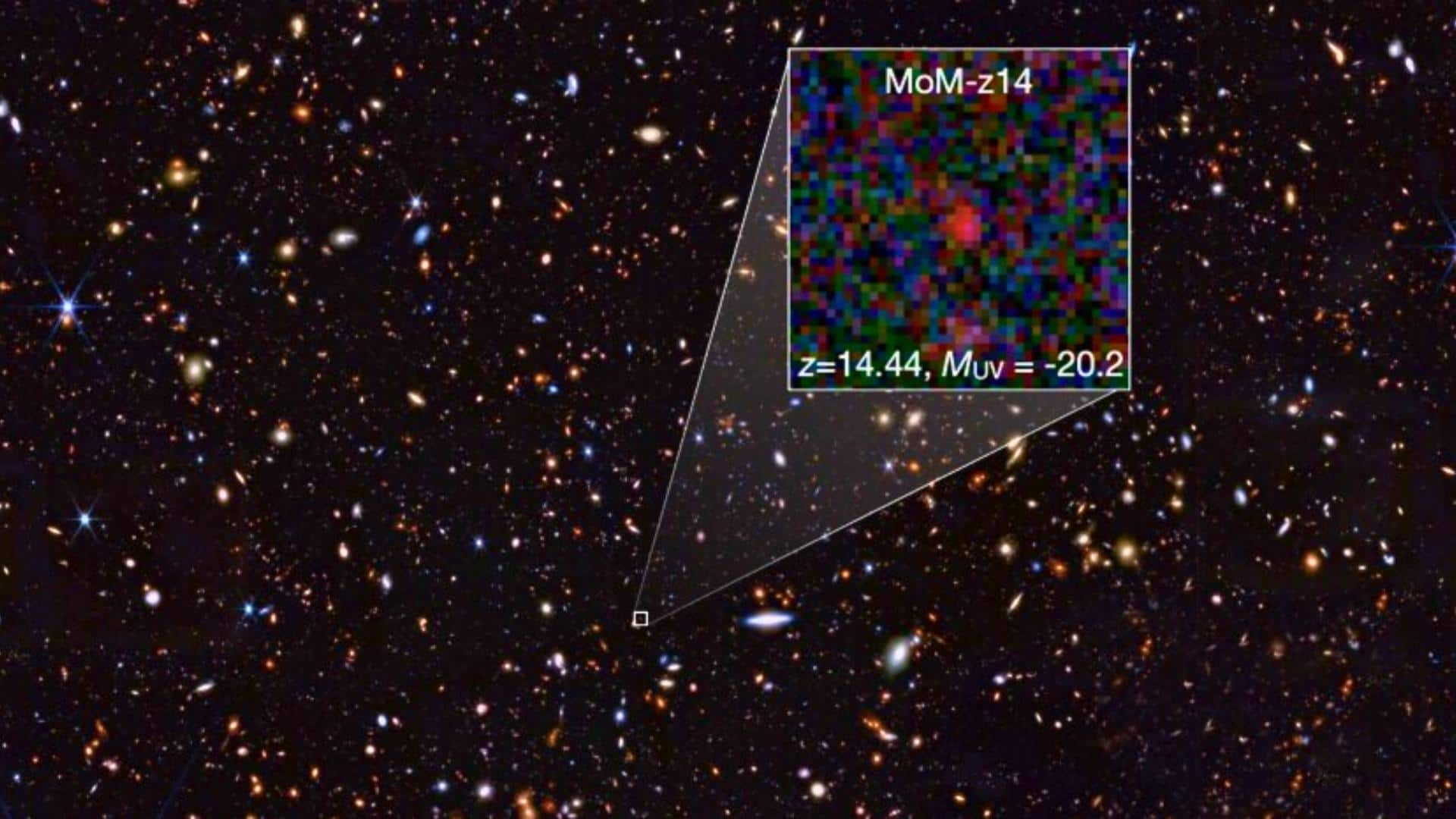
This is the earliest, most distant galaxy ever seen
What's the story
NASA's James Webb Space Telescope (JWST) has made a groundbreaking discovery by detecting the earliest and most distant galaxy ever observed. The newly discovered galaxy, dubbed "MoM z14," existed only 280 million years after the Big Bang. This makes it a major milestone in our understanding of cosmic history, as it pushes back the timeline of galaxy formation by some 20 million years.
Discovery
A cosmic miracle
The team behind the discovery has referred to it as a "cosmic miracle." Yale University's Professor of Astronomy and Physics, Pieter van Dokkum, who is part of the research team, said, "MoM z14 existed when the universe was about 280 million years old - we're getting quite close to the Big Bang." He added this is "the most distant object known to humanity."
Redshift explained
Understanding redshift and its significance
The JWST has been particularly good at spotting galaxies at high redshifts, a phenomenon where light from distant objects is stretched and shifted toward the "red end" of the electromagnetic spectrum, as it travels through expanding space. The more distant an object is, the greater its redshift. Before MoM z14's discovery, JADES-GS-z14-0 was considered the earliest galaxy, existing just 300 million years after the Big Bang with a redshift of z=14.32.
Galaxy features
Characteristics of MoM z14
The research team found that MoM z14 is about 50 times smaller than the Milky Way. They also detected emission lines from the galaxy, which showed the presence of elements such as nitrogen and carbon.
Elemental makeup
MoM z14's composition and future discoveries
The presence of carbon and nitrogen in MoM z14 suggests that there are earlier galaxies yet to be discovered. These elements were known to be produced by stars in later galaxies that exploded in supernovae. Van Dokkum said, "MoM z14 is not one of the very first objects that formed in the universe... it could be part of the first wave of formation of 'normal' galaxies." He also expressed confidence that JWST will find even earlier galaxies than this one.